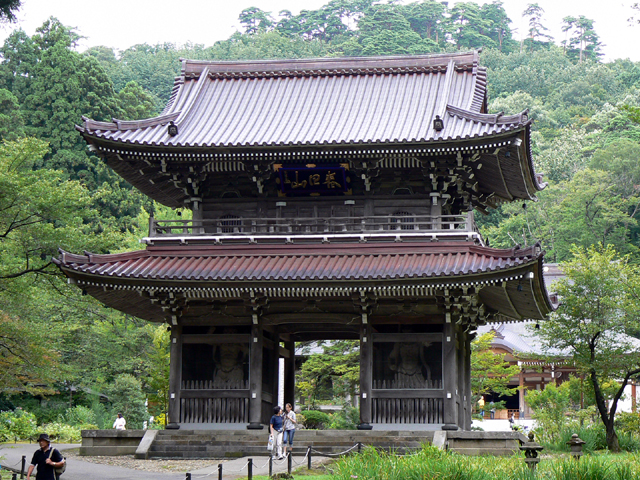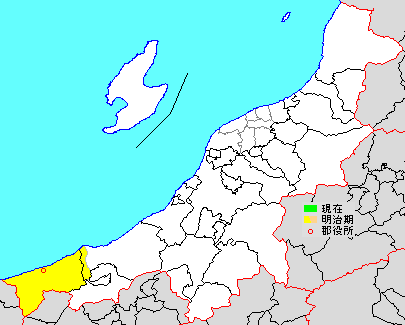|
Ouni
The ''ouni'' (ŔőžŃüćŃüź) is a ''y┼Źkai'' depicted in the ''Gazu Hyakki Yagy┼Ź'' by Toriyama Sekien. It is a ''y┼Źkai'' with a face like that of a demon woman (''kijo'') torn from mouth to ear, and its entire body is covered in hair. There is no explanatory text from Sekien, so it is unclear what kind of y┼Źkai this is. The "''o''" (Ŕőž) in "''ouni''" refers to the ramie plant or to bundles of string made from ramie, hemp, among others, so it is said that Sekien gave it the name "''ouni''" because it conjures up the image of a ''y┼Źkai'' with head and body hair made of layers of this "''o''". In the ''Hyakkai Zukan'' (1737, Sawaki Suushi), a ''y┼Źkai'' ''emaki'' from the Edo period, it is given by the name "''wauwau''", and Edo period ''y┼Źkai'' ''emaki'' would usually present it under that name. However, these presentations consisted of pictures, so it is not known what characteristics they had. In another instance, there is a drawing in the '' Hyakki Yagy┼Ź Emaki'' (Oda G┼Źch┼ ... [...More Info...] [...Related Items...] OR: [Wikipedia] [Google] [Baidu] |
Gazu Hyakki Yagy┼Ź
is the first book of Japanese artist Toriyama Sekien's famous ''Gazu Hyakki Yagy┼Ź'' e-hon tetralogy, published in 1776. A version of the tetralogy translated and annotated in English was published in 2016. Although the title translates to "The Illustrated Night Parade of a Hundred Demons", it is based on an idiom, ''hyakki yagy┼Ź,'' that is akin to pandemonium in English and implies an uncountable horde. The book is followed by ''Konjaku Gazu Zoku Hyakki'', ''Konjaku Hyakki Sh┼źi'', and ''Gazu Hyakki Tsurezure Bukuro''. The book is a supernatural bestiary, a collection of ghosts, spirits, spooks and monsters from literature, folklore, and other artwork. The art of ''Gazu Hyakki Yagy┼Ź'' heavily references a 1737 scroll-painting called the ''Hyakkai Zukan'' by artist Sawaki S┼źshi; Sekien's innovation was preparing the illustrations as woodblock prints that could be mass-produced in a bound book format. Intended as a parody of then-popular reference books such as the ''Wakan Sans ... [...More Info...] [...Related Items...] OR: [Wikipedia] [Google] [Baidu] |
Hyakkai Zukan
is a picture scroll by Edo period Japanese artist Sawaki Suushi. Completed in 1737, this scroll is a supernatural bestiary, a collections of ghosts, spirits and monsters (Y┼Źkai), which Suushi based on literature, folklore, other artwork. These images had a profound influence on subsequent ''y┼Źkai'' imagery in Japan for generations. Scroll gallery Image:Suushi Mikoshi-nyudo.jpg, Image:Suushi_Shokera.jpg, Image:Suushi Hyosube.jpg, Image:Suuhi Nure-onna.jpg, Image:Suushi_Kappa.jpg, Image:Suushi_Gagoze.jpg, Image:Suuhi Nurarihyon.jpg, Image:Suuhi Kasha.jpg, Image:Suuhi Ubume.jpg, Image:Suushi_Nuppeppo.jpg, Image:Suushi_Waira.jpg, Image:Suushi_Otoroshi.jpg, Image:Suushi Yama-biko.jpg, Image:Suushi_Nuribotoke.jpg, Image:Suushi Ouni.jpg, Image:Suushi_Yume-no-seirei.jpg, Image:Suushi Yama-uba.jpg, Image:Suushi Inugami.jpg, Image:Suushi_Nukekubi.jpg, Image:Suuhi Yama-warau.jpg, Image:Suuhi Uwan.jpg, Image:Suushi Akakuchi.jpg, Image:Suuhi Ushioni.jpg, Image:Mehi ... [...More Info...] [...Related Items...] OR: [Wikipedia] [Google] [Baidu] |
Niigata Prefecture
is a Prefectures of Japan, prefecture in the Ch┼źbu region of Honshu of Japan. Niigata Prefecture has a population of 2,227,496 (1 July 2019) and is the List of Japanese prefectures by area, fifth-largest prefecture of Japan by geographic area at . Niigata Prefecture borders Toyama Prefecture and Nagano Prefecture to the southwest, Gunma Prefecture to the south, Fukushima Prefecture to the east, and Yamagata Prefecture to the northeast. Niigata, Niigata, Niigata is the capital and largest city of Niigata Prefecture, with other major cities including Nagaoka, Niigata, Nagaoka, J┼Źetsu, Niigata, J┼Źetsu, and Sanj┼Ź, Niigata, Sanj┼Ź. Niigata Prefecture contains the Niigata Major Metropolitan Area centered on Niigata with a population of 1,395,612, the largest metropolitan area on the Sea of Japan coast and the twelfth-largest in Japan. Niigata Prefecture is part of the historic Hokuriku region and features Sado, Niigata, Sado Island, the sixth largest island of Japan in area follo ... [...More Info...] [...Related Items...] OR: [Wikipedia] [Google] [Baidu] |
Itoigawa, Niigata
is a city located in Niigata Prefecture, Japan. , the city had an estimated population of 41,333, and a population density of 55 persons per km2. The total area of the city is . Geography Itoigawa is located in the far southwestern corner of Niigata Prefecture, bordered by the Sea of Japan to the north, Nagano Prefecture to the south, and Toyama Prefecture to the west. Parts of the city are within the borders of the Ch┼źbu-Sangaku National Park or the My┼Źk┼Ź-Togakushi Renzan National Park. Itoigawa is also famous for its jade which can be found on local beaches. Itoigawa also lends its name to the Itoigawa-Shizuoka Tectonic Line, a major fault that runs from Itoigawa, through Lake Suwa to the city of Shizuoka in Shizuoka Prefecture, forming the western border of the Fossa Magna. Surrounding municipalities *Niigata Prefecture ** J┼Źetsu ** My┼Źk┼Ź *Nagano Prefecture ** Otari **Hakuba *Toyama Prefecture **Asahi Climate Itoigawa has a Humid climate (K├Âppen ''Cfa'') character ... [...More Info...] [...Related Items...] OR: [Wikipedia] [Google] [Baidu] |
Echigo Province
was an old province in north-central Japan, on the shores of the Sea of Japan. It bordered on Uzen, Iwashiro, K┼Źzuke, Shinano, and Etch┼ź Provinces. Nussbaum, Louis-Fr├ęd├ęric. (2005). "''Echigo''" in . It corresponds today to Niigata Prefecture, minus the island of Sado. Its abbreviated form name was , with Echizen and Etch┼ź Provinces. Under the ''Engishiki'' classification system, Echigo was ranked as one of the 35 "superior countries" (ńŞŐňŤŻ) in terms of importance, and one of the 30 "far countries" (ÚüáňŤŻ) in terms of distance from the capital. Echigo and K┼Źzuke Province were known as the J┼Źetsu region. History In the late 7th century, during the reign of Emperor Monmu, the ancient province of was divided into three separate provinces: Echizen, Etch┼ź, and Echigo. The new Echigo Province consisted of Iwafune and Nutari Districts, and was one of two border provinces of the Yamato state with the Emishi (the other being Mutsu). In 702, Echigo was give ... [...More Info...] [...Related Items...] OR: [Wikipedia] [Google] [Baidu] |
Nishikubiki District, Niigata
former district located in Niigata Prefecture, Japan. Administrative Subdivisions of Japan with Separate Appendix of 47 Prefectural Maps. . Division of Research for Far East, 1946, 652 pages Dissolved in 2005. As of 2003, the district had an estimated |
Softgarage
is a Japanese company that produces anime, games, character goods, music, and books. Softgarage was the company that produced the '' GR: Giant Robo'' anime. Though Softgarage primarily focuses on the production of original video animation (OVAs), it has also worked on anime television series and anime film. Recently, Softgarage has also started to produce anime related goods, such as mousepads. They also own the hentai OVA label, Pink Pineapple which they inherited when they bought the rights to KSS's assets after KSS went bankrupt in 2005. History The company was first founded on July 26, 1989. Major works OVA series *'' Guardian Hearts''/''Guardian Hearts! Power UP!'' *'' Wind: A Breath of Heart'' *''Lime-iro Senkitan'' *''_Summer'' *''Minami no Tei┼Ź'' Anime television *'' Kakyuusei 2'' *'' GR: Giant Robo'' *''Lime-iro Senkitan'' Other *''Natural Woman "(You Make Me Feel Like) A Natural Woman" is a 1967 single released by American soul singer Aretha Franklin on ... [...More Info...] [...Related Items...] OR: [Wikipedia] [Google] [Baidu] |
ŔČŤŔźçšĄż
is a Japanese privately-held publishing company headquartered in Bunky┼Ź, Tokyo. Kodansha is the largest Japanese publishing company, and it produces the manga magazines ''Nakayoshi'', ''Afternoon'', ''Evening'', ''Weekly Sh┼Źnen Magazine'' and ''Bessatsu Sh┼Źnen Magazine'', as well as the more literary magazines ''Gunz┼Ź'', ''Sh┼źkan Gendai'', and the Japanese dictionary ''Nihongo Daijiten''. Kodansha was founded by Seiji Noma in 1910, and members of his family continue as its owners either directly or through the Noma Cultural Foundation. History Seiji Noma founded Kodansha in 1910 as a spin-off of the ''Dai-Nippon Y┼źbenkai'' (, "Greater Japan Oratorical Society") and produced the literary magazine ''Y┼źben'' () as its first publication. The name ''Kodansha'' (taken from ''K┼Źdan Club'' (), a now-defunct magazine published by the company) originated in 1911 when the publisher formally merged with the ''Dai-Nippon Y┼źbenkai''. The company has used its current legal name since ... [...More Info...] [...Related Items...] OR: [Wikipedia] [Google] [Baidu] |





.jpg)